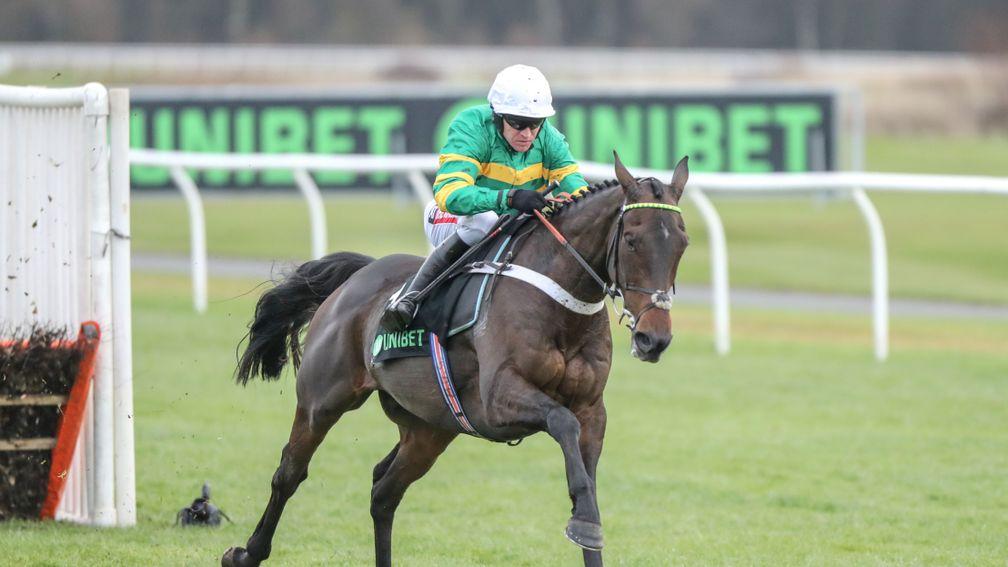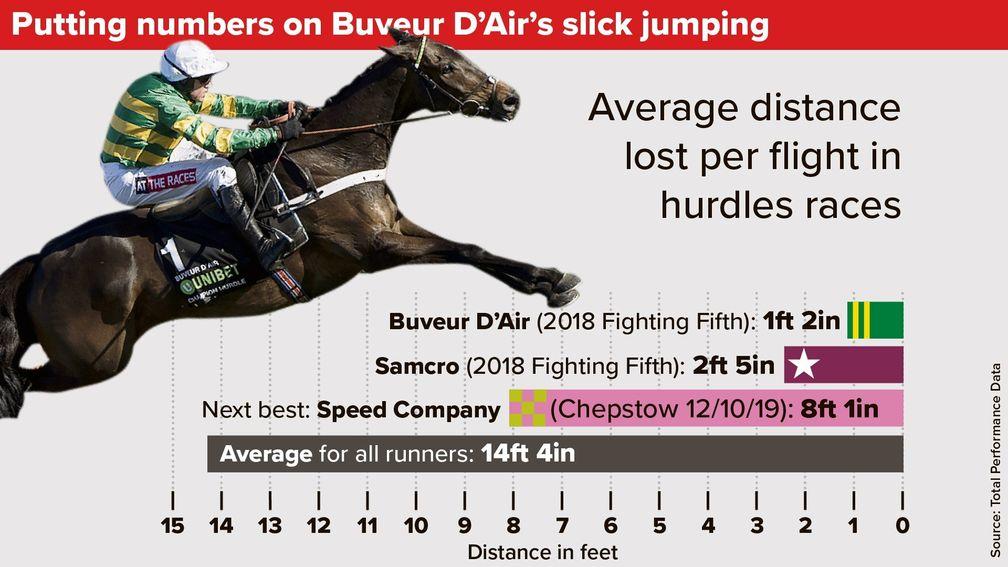Performance metrics: rivals have it all to do to catch super-slick Buveur D'Air

In last year's Fighting Fifth, Buveur D'Air gave a tremendous demonstration of his notably fluent jumping, which has long been reputed to take lengths out of his rivals. While it is clearly an advantage to jump efficiently, it has been impossible to get anywhere near quantifying its worth, until now.
Applying tracking data to jumps racing is a discipline in its infancy. Buveur D'Air is an ideal test case for putting figures on jumping efficiency.

Total Performance Data's jumps figures will improve as more data is fed in, but the early results show a clear relationship over hurdles between lifetime-best rating and ground lost at the flights: the better the horse, the less distance they lose.
Buveur D'Air's Fighting Fifth win last year is the best performance currently on record. That day he lost just over a foot per hurdle, relative to his average race speed. Considering his average stride length was over 21 feet, that counts as barely breaking stride.
The next best figures, as it happen, come from runner-up Samcro. Despite being made to look cumbersome relative to Buveur D'Air at the hurdles that day, he lost only 2ft5in per flight, way better than the average. In fact, it is way better than the next best in the sample, which was Speed Company at Chepstow last month.
This discrepancy between visual impressions and the figures suggests that style matters less than substance when it comes to high-performing hurdlers. Or, put another way, just because a horse looks ponderous in its technique does not necessarily mean it is slow.
The figures say that, over the course of a two-mile race, Buveur D'Air can be expected to make up over 13 lengths on the average hurdler. While the observed correlation suggests his smart rivals on Saturday are likely to be a little quicker than that, it still demonstrates the size of the task they face in taking down a horse that gains so much ground at his hurdles.
All data courtesy of Total Performance Data, whose tracking covers more than 20 courses in the UK and North America
Published on inPreviews
Last updated
- Ben Pauling unleashes his 'speediest novice hurdler' - plus an infrequent visitor to Cheltenham who it pays to follow
- 3.52 Clonmel: Rexem the one to beat for John McConnell but plenty of runners hoping the rain stays away
- 'He might prove a bargain buy' - it's time to deliver for Amo's £2m 'nearly horse'
- 3.35 Sandown: Sosie on parade at Sandown as master trainer Andre Fabre targets first Eclipse - but opinions differ whether ground will suit
- 1.50 Sandown: A cohort's poor record in the Coral Charge unearthed - plus the inside word from the trainers
- Ben Pauling unleashes his 'speediest novice hurdler' - plus an infrequent visitor to Cheltenham who it pays to follow
- 3.52 Clonmel: Rexem the one to beat for John McConnell but plenty of runners hoping the rain stays away
- 'He might prove a bargain buy' - it's time to deliver for Amo's £2m 'nearly horse'
- 3.35 Sandown: Sosie on parade at Sandown as master trainer Andre Fabre targets first Eclipse - but opinions differ whether ground will suit
- 1.50 Sandown: A cohort's poor record in the Coral Charge unearthed - plus the inside word from the trainers